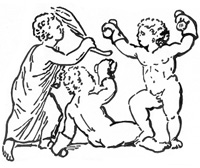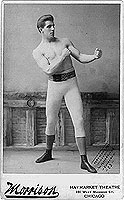“Richard Pace—an ancestor of mine, an indentured servant—may be one of the old bastards you are talking about. Still wonder why we wound up in Georgia and Tennessee.”
-Ishmael
I’m digging up what I can on this, Ishmael, but my sense is we will always be finding more questions than answers. Let’s keep in mind that the white elites who have kept, do keep, and will keep, our history engage in the practice of obfuscating the fact that the first working whites in America were wholly owned chattel. Your Scotch-Irish heritage makes sense for Georgia and Tennessee. Georgia was settled by two thousand Scotts [POWs, I think] who were deported under relatively humane conditions to Georgia in a move by the Brits to take their Scottish problem and make it the problem of the Spaniards in Florida. The colony would not initially permit slavery as the Scottish people had been the victims of a relentless British slave trade in their homeland. Eventually, as men aspired to imitate their English masters, a debate raged about instituting slavery. The greed eventually won out, with a man not granted a vote unless he owned a white man!
Eventually so many of these white slaves and indentures migrated to the Tennessee area that black slaves [also POWs] were purchased to employ as soldiers and man hunters in rooting out the backwoodsmen. This began the change over in white to black slavery.
There were also white slaves migrating out to Tennessee and Kentucky from Virginia and the Carolinas and Maryland, while the ones farther north aimed for the upper Ohio Valley. For a while there was small mountain nation named Franklin in eastern Tennessee and western Carolina.
Virginian politicians wanted Maryland, and all of the wilderness south and west of Jamestown for their own, and even fought some small civil wars over this, with a far higher proportion of combatants per population than the “total wars” of the 20th Century. Their schemes included sending bands of men who had worked out their term of indenture, promising them land grants in Carolina in return for them clearing out the Indians. Comically—or tragically—not enough men who had survived their term of indenture could be found to mount an expedition.
In the meantime, the white slaves of the Puritan New Englanders built some small coastal vessels [pinaces], not unlike the shallow draft vessels that Cortez and his men built to sail the lakes of the Mexican Highlands, and began exploring Carolina. The Virginia men had direct government support, including martial law authority funded by a corporation [The Virginia Company] and a military governor, working most of their slaves to death. The casualties among laborers in Jamestown were astounding. However, the Puritans just bought small auxiliary groups of boys and worked them to death, trusting to alliances with the Indians of the interior to keep the slaves from escaping. Thanks to the bloodthirsty Mountain tribes of the Iroquoian League, escaped white slaves and coastal Indians [who mostly huddled around white settlements for protection] were doomed in their attempts to independently homestead, so drifted south into Pennsylvania overland, and sailed to Carolina in their bids for independence. The Quaker slave drivers were also poorly equipped to rule by force and only proved capable of allying with weak tribes in fear of stronger ones and lost much of their captive workforce to westward migration. Many of the massacres of innocent Indian children, women and elders were in fact the work of escaped white slaves who hated the Indians for being their hereditary bounty hunters.
When it came to early Colonial America, shit flowed south and uphill into the piedmont and beyond, into the Appalachian wilderness, forested with massive old growth timber over 98% of its extent, in relatively dense stands when compared to the West Coast where forest fires kept midsized trees in check. The east was so thickly timbered that only river travel was practical and small bands of warriors—and even individuals—on foot could frustrate entire militia forces.
If any readers have links to sources concerning the early colonial era, please foreword them to the author at jameslafond dot-com at gmail dot-com











You might be interested in what kind of forest was there. Chestnut trees. Huge. Massive. They provided a enormous amount of food for animals and humans. Unfortunately they were all killed by blight. THE AMERICAN CHESTNUT FOUNDATION is trying to bring them back.
acf.org
nature.com/polopoly_fs/7.6631.1349197599!/image/Chestnuts.jpg_gen/derivatives/landscape_630/Chestnuts.jpg
washingtonpost.com/lifestyle/food/unearthed-thanks-to-science-we-may-see-the-rebirth-of-the-american-chestnut/2014/11/19/91554356-6b83-11e4-a31c-77759fc1eacc_story.html
wellsreserve.org/writable/images/sue/opengrowntree.jpg
carltonhobbs.us/wp-content/uploads/2015/05/4032756268_61dfc50f2b_z.jpg
waterfordcitizens.org/graphics/chestnut-tree.jpg
cdn.theatlantic.com/static/mt/assets/science/assets_c/2013/07/GetImage-thumb-650x839-122977-4-thumb-570x337-128293.jpg
ctacf.org/images/AncientChestnut_800px.jpg
Thanks so much for these links, Sam.
I am reading an article on this now, and it is fascinating to imagine how the Eastern U.S. looked. Lovecraft had an idea that it—the vast forests—was at the heart of the American horror complex.